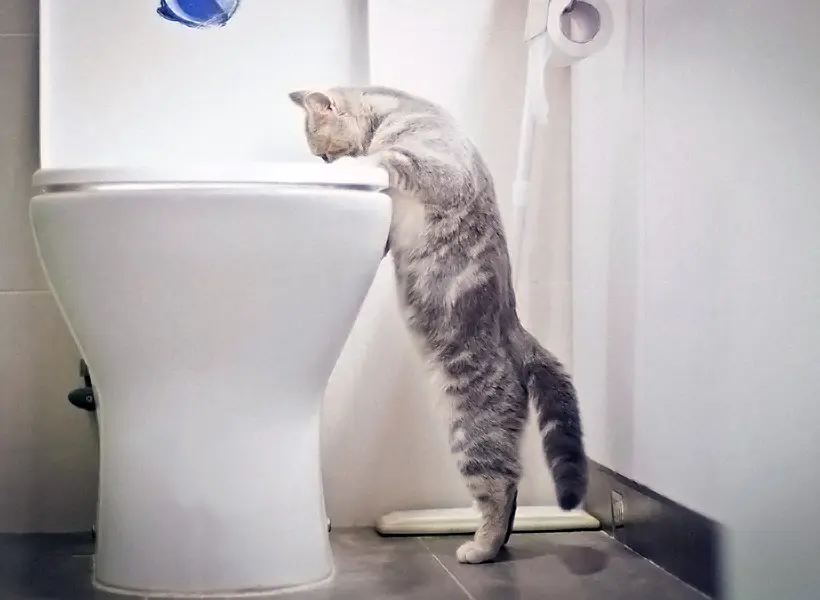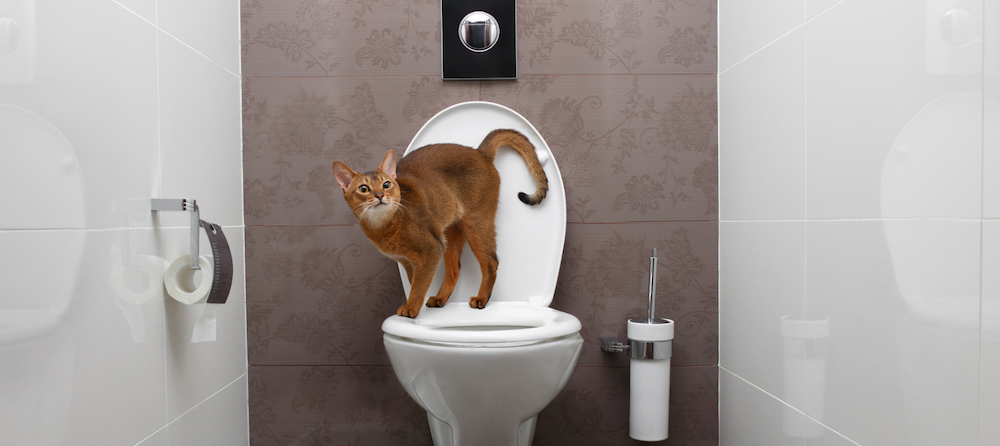The article following next involving Don’t flush cat feces down the toilet is truly engaging. Check it out for your own benefit and see what you think about it.

Introduction
As feline owners, it's necessary to be mindful of exactly how we dispose of our feline friends' waste. While it may seem hassle-free to flush cat poop down the commode, this method can have harmful repercussions for both the atmosphere and human health.
Alternatives to Flushing
Thankfully, there are safer and a lot more responsible ways to deal with feline poop. Take into consideration the complying with alternatives:
1. Scoop and Dispose in Trash
The most typical method of getting rid of cat poop is to scoop it into a biodegradable bag and toss it in the trash. Make certain to use a specialized litter scoop and dispose of the waste quickly.
2. Usage Biodegradable Litter
Choose eco-friendly pet cat clutter made from products such as corn or wheat. These litters are environmentally friendly and can be securely gotten rid of in the trash.
3. Bury in the Yard
If you have a lawn, take into consideration hiding feline waste in an assigned location away from veggie gardens and water sources. Make sure to dig deep adequate to avoid contamination of groundwater.
4. Install a Pet Waste Disposal System
Invest in a pet dog waste disposal system especially designed for cat waste. These systems use enzymes to break down the waste, minimizing smell and ecological effect.
Health Risks
In addition to environmental problems, flushing pet cat waste can additionally posture wellness risks to human beings. Pet cat feces might have Toxoplasma gondii, a bloodsucker that can cause toxoplasmosis-- a potentially serious illness, specifically for expecting ladies and people with damaged body immune systems.
Environmental Impact
Purging cat poop presents hazardous microorganisms and bloodsuckers right into the supply of water, posturing a considerable threat to aquatic environments. These contaminants can adversely impact aquatic life and concession water quality.
Verdict
Responsible animal ownership prolongs beyond offering food and shelter-- it also entails appropriate waste monitoring. By avoiding flushing cat poop down the commode and selecting different disposal approaches, we can decrease our ecological impact and safeguard human health and wellness.
Why Can’t I Flush Cat Poop?
It Spreads a Parasite
Cats are frequently infected with a parasite called toxoplasma gondii. The parasite causes an infection called toxoplasmosis. It is usually harmless to cats. The parasite only uses cat poop as a host for its eggs. Otherwise, the cat’s immune system usually keeps the infection at low enough levels to maintain its own health. But it does not stop the develop of eggs. These eggs are tiny and surprisingly tough. They may survive for a year before they begin to grow. But that’s the problem.
Our wastewater system is not designed to deal with toxoplasmosis eggs. Instead, most eggs will flush from your toilet into sewers and wastewater management plants. After the sewage is treated for many other harmful things in it, it is typically released into local rivers, lakes, or oceans. Here, the toxoplasmosis eggs can find new hosts, including starfish, crabs, otters, and many other wildlife. For many, this is a significant risk to their health. Toxoplasmosis can also end up infecting water sources that are important for agriculture, which means our deer, pigs, and sheep can get infected too.
Is There Risk to Humans?
There can be a risk to human life from flushing cat poop down the toilet. If you do so, the parasites from your cat’s poop can end up in shellfish, game animals, or livestock. If this meat is then served raw or undercooked, the people who eat it can get sick.
In fact, according to the CDC, 40 million people in the United States are infected with toxoplasma gondii. They get it from exposure to infected seafood, or from some kind of cat poop contamination, like drinking from a stream that is contaminated or touching anything that has come into contact with cat poop. That includes just cleaning a cat litter box.
Most people who get infected with these parasites will not develop any symptoms. However, for pregnant women or for those with compromised immune systems, the parasite can cause severe health problems.
How to Handle Cat Poop
The best way to handle cat poop is actually to clean the box more often. The eggs that the parasite sheds will not become active until one to five days after the cat poops. That means that if you clean daily, you’re much less likely to come into direct contact with infectious eggs.
That said, always dispose of cat poop in the garbage and not down the toilet. Wash your hands before and after you clean the litter box, and bring the bag of poop right outside to your garbage bins.
https://trenchlesssolutionsusa.com/why-cant-i-flush-cat-poop/

We had been shown that article on Can You Flush Cat Poop Down The Toilet? through a friend on another domain. Don't hesitate to set aside a second to distribute this post if you appreciated it. Kudos for your time. Visit again soon.
Instant Quote